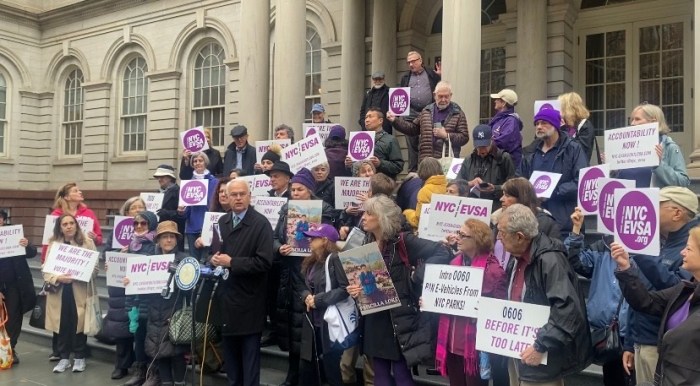By Michèle De Meglio
Were they successful or an embarrassing failure? The answer to that question depends on who you ask. Mayor Michael Bloomberg insists the latest restructuring of the public school system is occurring because the offices being eliminated have served their purpose but parents say they were a waste. “The regions have definitely outlived their usefulness,” said Carlo Scissura, president of District 20’s Community Education Council (CEC). As part of a continued effort to allocate more decision-making power to principals, the city Department of Education (DOE), Bloomberg announced in his State of the City address, will do away with regions, which are overseeing bodies of three or four school districts. Bloomberg created the regional structure shortly after gaining control of the school system during his first mayoral term. Explaining his reasons for dismantling the regions, Bloomberg said, “The regional offices that we established four years ago to stabilize a failing system will be eliminated now that their job is done.” But Brooklyn parents charge that the mayor’s comments are nothing but spin and the regions never worked. Complaints frequently circulated that when questioned about school-specific issues, regional office staffers were often unable to provide answers. “In Region 7, we probably had the worst parent support office in the city,” Scissura said. “They did not respond to people.” Shortly after the regions were implemented, state Senator Carl Kruger filed a lawsuit against the city with the goal of abolishing the new structure. He says regions did little to benefit parents. “Parents who were used to dealing with neighborhood offices now had a huge bureaucracy to contend with and the results were about as unpleasant as you might expect,” he said. With the regions gone, supervisory power over schools will revert back to districts, specifically community superintendents who will be the only link between districts and DOE bigwigs. “There’s really no need to have another layer,” Scissura said. “If you have a community superintendent who reports directly to the chancellor, that’s really all you need. You don’t need another layer of bureaucracy.” By eliminating regions, the money used to operate the offices and pay staffers will be redirected to schools. As for those who will lose their jobs, a DOE spokesperson said displaced administrators are expected to vie for other supervisory positions within the department and organizations offering support services to schools. The mayor’s State of the City address also announced planned changes to the way schools are funded. Bloomberg said, “funding gaps between comparable schools can top $1 million, or $2,000 per student, year after year.” He said the current funding process was outlined under the old Board of Education structure and was politically motivated. To ensure that all schools receive adequate funding, cash will be provided based on the number of students in a school. That delighted parents who say unfair funding practices have left many schools in low-income areas without necessary resources, like enough textbooks. Brownsville resident Zakiyah Ansari, who has two children enrolled at I.S. 78, 1420 East 68th Street, calls the current process of allocating money to schools “not equal.” The Coalition for Educational Justice (CEJ), an alliance of parent organizations of which Ansari is a member, just released a report deeming the city’s middle schools inadequate in low-income areas, largely in part to a lack of sufficient funding. Scissura said the funding by student population process will work out well for the overcrowded schools in his district. “P.S. 69 was built for 600 students. They’re at 800. If we allocate money per student population, then District 20 will receive more funding,” he said.


































